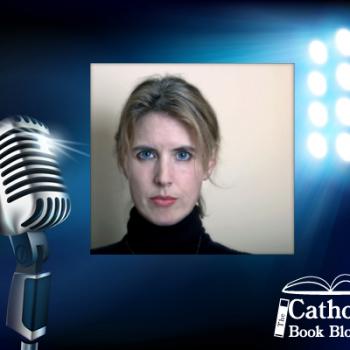 PETE: What drew you to writing your conversion story “Catholic By Choice”?
PETE: What drew you to writing your conversion story “Catholic By Choice”?
RICHARD COLE: We always want to share good news, right? If we see a terrific movie, we want to tell our friends, and I had just gone through this terrific, amazing, dazzling experience of conversion so I wanted to tell everybody about it. Writing a book also seemed like the “next best thing,” as the Jesuits would say. I had been taking notes all through the RCIA process, and so instead of reading for a couple of hours every day before work, I started writing out the notes. Getting laid off also helped. Suddenly I had all this time on my hands. I was able to finish the first draft in a couple of months before starting to look for another job.
PETE: Did you find it hard to detail your difficulties with alcohol and your struggles discovering which faith worked for you knowing that many people would be reading this story?
RICHARD COLE: Not really. In recovery or therapy, you tell your story over and over and over — and you listen to others doing the same. It’s a kind of nudist camp, and you get used to personal revelations. I had also written a book of poems in the 90s, “Success Stories,” that was fairly candid about my life in New York. Finally, it helped that I was over 50 when I started writing “Catholic by Choice.” One of the benefits of age is not being so self-conscious, though that never completely goes away, of course.
PETE: Who are you hoping benefits from this book? Who was your target audience?
RICHARD COLE: I believe that any memoir worth reading is not about the person who wrote it. So I’d like to think that the book is not about me but about falling in love. My audience would therefore include anyone who enjoys a good love story. To be more realistic, though, I guess I see three audiences. First would be readers who would like more information about the experience of becoming a Catholic. How does the initiation program work? How long does it take? What are the rites? How do they work? Do you get a tattoo? The second audience might be readers who are going through an intense conversion of some sort and need reassurance that what they’re experiencing is not weirdness but a natural transition from one state to another. During my own conversion, reading about other converts gave me that sort of reassurance. The third audience might be readers who think that religious conversion is gloomy and somber. My initiation was solemn but it sure wasn’t somber. The book turned out to be a lot funnier than I expected, and I’d give this book to anyone who thinks that Catholicism is only about guilt, obligations and prohibitions. “We’re in the joy business,” says Father Robert Barron, and I’d like to share that message.
PETE: For those who have not read your book yet, what was the defining moment when you knew you had found a home in the Catholic Church?
RICHARD COLE: As the saying goes, Protestants take a leap of faith, Catholics crawl, but I was doing some mighty fast crawling after I returned from the monastery. I think the thing that impressed me the most was that I felt accepted at every Catholic parish I visited. The Mass was always a bit different but always the same, and I never felt like a “visitor.” Nobody tried to muscle me into the fold; nobody asked if I had been saved. I just felt like one of the family.
PETE: Time for my signature ending question. This is a blog about books. What is currently on your bookshelf to read?
RICHARD COLE: Under faith and Catholicism, I just received “Night of the Confessor” by the Czech Roman Catholic priest Tomas Halik. He talks about the paradox of being a modern Christian. The book looks deep and rewarding. “Leaping” and “The Thorny Grace of It,” by Brian Doyle, wonderfully written essays that are joyful without being sappy. Quite a trick, and he does it very well. “Let There Be Light” by a poet I recently met, Nick Courtright. He’s structured a book of poems around the seven days of creation. He has a great ear, and he’s not afraid of working with big ideas and matters of faith. “St. Peter’s B-List,” a refreshing anthology of poems about saints, edited by Mary Ann Miller. “Acedia & Me” by Kathleen Norris. Came out a few years back. She weaves a discussion of acedia —spiritual lethargy, a sense of “what’s the use” that can turn us away from God — together with the story of the long illnesses and eventual death of her husband. Worth reading on several levels.
Under literature, I’m rereading the later poems of Wallace Stevens. I’ve never been able to decide whether Stevens has done more harm or good for American poetry. Yes, his work is filled with patches of brilliance. That’s obvious. But has he also given license to a kind of aestheticism, an ornamental poem that is always more about itself than anything else? Years ago, Annie Dillard said that modern poetry “has priced itself out of the market.” Stevens might be one of the reasons why. Also rereading Louis Simpson. His poems give me sustenance; I can live on them like bread. Then there’s “MFA VS NYC,” edited by Chad Harbach. As a writer outside of both literary New York and the MFA network, this collection of essays has given me a better understanding of how the literary world actually works than anything I’ve read in 30 years. Very interesting. Very depressing.
For art, I’m looking at the paintings of Lucien Freud, a painter I really, really didn’t like for years. Now I’m beginning to see more. Also rereading Robert Hughes’ “Shock of the New” to refresh my orientation with the 20th century. Finally, I’m studying Phillip Guston. I’m learning from his abstractions — things about composition, color and markings that I might use for my own paintings. But I’m also studying his career and how he moved in and out of the mainstream, evolving from murals to abstractions in the 50s and then to those outlandish, absolutely unique drawing-paintings in his last decade. “You have to go against what you do well.” I definitely empathize with that contrarian impulse. I used to think it was self-destruction (which it can be. so what?). Now I think it’s just a way that the creative process can work, with destruction as a necessary part of making something new.
___________________________________________________________________________________________________________________










